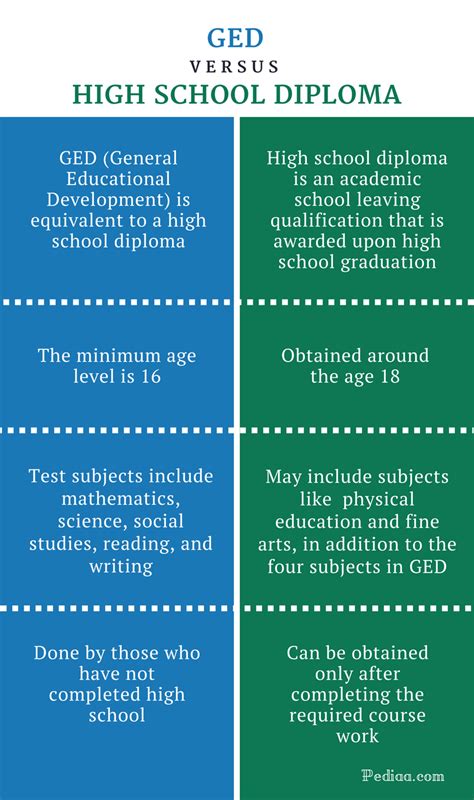The General Educational Development (GED) test is a high school equivalency exam. It is designed to measure your knowledge and skills in the areas of reading, writing, mathematics, science, and social studies. A passing score on the GED test is equivalent to a high school diploma.

Benefits of a GED
There are many benefits to earning a GED. Some of the most common include:
- Increased job opportunities: A GED can open up new job opportunities that are not available to those without a high school diploma.
- Higher earnings: GED holders earn more money than those without a high school diploma.
- Improved job security: GED holders are less likely to be laid off than those without a high school diploma.
- Increased access to education: A GED can help you qualify for college or other post-secondary education programs.
- Personal satisfaction: Earning a GED can give you a sense of accomplishment and pride.
Pain Points of a GED
There are also some pain points associated with getting a GED. Some of the most common include:
- Cost: The cost of taking the GED test can be a barrier for some people.
- Time commitment: Studying for and taking the GED test can be a time-consuming process.
- Difficulty: The GED test is not easy to pass. You need to have a solid foundation in the areas of reading, writing, mathematics, science, and social studies.
- Stigma: There is still some stigma associated with earning a GED. Some people believe that GED holders are not as intelligent as those with a traditional high school diploma.
How a GED Compares to a Diploma
A GED is not exactly the same as a diploma. However, it is equivalent to a diploma in terms of the knowledge and skills that you need to succeed in college or the workforce.
Here is a table that compares the GED to a diploma:
| Characteristic | GED | Diploma |
|---|---|---|
| Level of education | High school equivalency | High school |
| Requirements | Pass the GED test | Complete four years of high school |
| Cost | Varies by state | Varies by school district |
| Time commitment | Varies by individual | Four years |
| Difficulty | Not easy to pass | Not easy to complete |
| Stigma | Some stigma associated | No stigma associated |
| Recognition | Recognized by colleges and employers | Recognized by colleges and employers |
Common Mistakes to Avoid When Getting a GED
There are a few common mistakes to avoid when getting a GED. Some of the most common include:
- Not preparing enough: The GED test is not easy to pass. You need to make sure that you are well-prepared before you take the test.
- Taking the test too soon: If you are not ready to take the test, you will likely fail. It is better to wait until you are confident that you can pass the test.
- Giving up: The GED test can be challenging, but it is not impossible to pass. Do not give up if you do not pass the test the first time. Keep studying and practicing until you achieve your goal.
- Ignoring the stigma: There is still some stigma associated with earning a GED. However, this stigma is undeserved. A GED is equivalent to a diploma in terms of the knowledge and skills that you need to succeed in college or the workforce.
Conclusion
A GED is a high school equivalency exam. A passing score on the GED test is equivalent to a high school diploma. There are many benefits to earning a GED, including increased job opportunities, higher earnings, improved job security, increased access to education, and personal satisfaction. However, there are also some pain points associated with getting a GED, including cost, time commitment, difficulty, and stigma. If you are considering getting a GED, be sure to prepare well, take the test when you are ready, and do not give up if you do not pass the test the first time.
